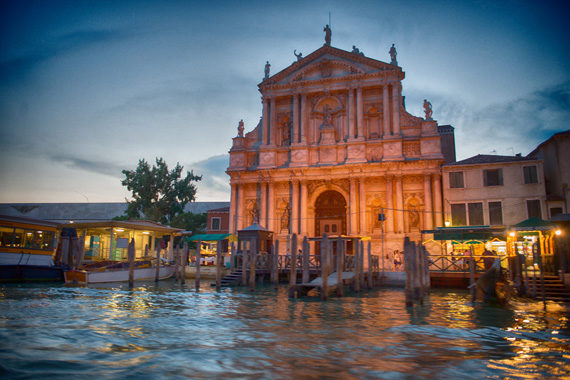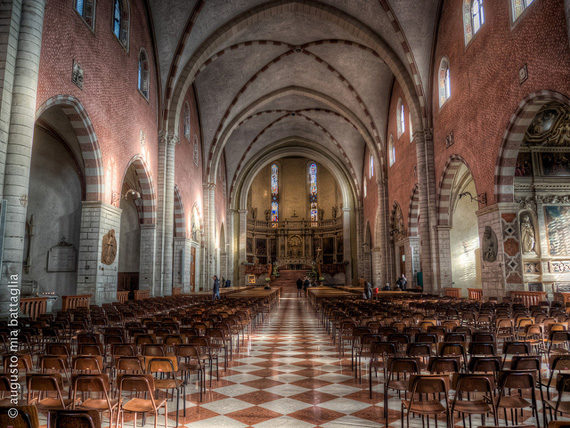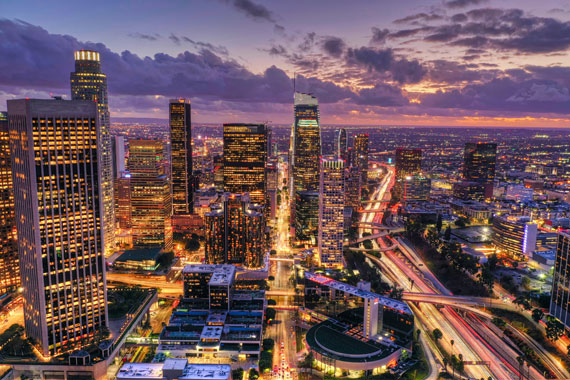If I had a nickel for every time I heard someone say, “I only shoot RAW” (you could substitute JPEG for RAW here) I would be rich. Truth be told, if one limits one’s self to a single format then, I suggest, that one has established limits that are simply stifling one’s creative choices.
Many people argue that RAW is superior to JPEG in that it captures a significantly wider dynamic range, a fact quite true for single image photography. When it comes to creating hdr images, however, JPEG is the virtual equal of RAW.
The dynamic range of an hdr image is captured through exposure control across 3 to 5 bracketed exposures (some folks use up to 7 bracketed exposures but I think this is overkill) exposing for extremes at either end of the dynamic range.
By relying on multiple exposures and merging them into an hdr format one extends their ability to capture the dynamic range of a scene so that the final image created extends across the entire dynamic range of the scene being photographed. If your camera only shoots in JPEG you shouldn’t run to the photo shop and buy one that adds RAW to your gadget bag unless, of course, you have other reasons to shoot in RAW.
In HDR photography, RAW does provide one with a possible advantage. RAW exposures create a digital file (not an image) that captures all that the camera’s sensor is capable of capturing. The RAW image displayed is prioritized to the camera settings but all of the other image data is present in the file as well. In single image shooting, RAW offers one a wide range of fixes for shots that simply got away, that are over or under exposed or the white balance is way off. Because all of the data is already there, poor RAW images can be salvaged. In HDR the RAW file allows one to create a faux HDR image in a number of conversion/merger software solutions. Photomatix Pro, the software I use allows one to create a passable HDR image from a single RAW formatted file.
Other post-processing software have presets that selectively adjust the highlights and shadows of a single image to produce something that appears to have the full dynamic range of a merged HDR image but don’t be fooled! Adjusting the shadows and highlights is something like putting 10 peaches in a small basket and then transferring them to a bigger basket. The fact still remains that one still only has 10 peaches. While these adjusting techniques produce interesting images, they are not what they pretend to be.

Photo by Lisa Elliott.
One more thing to keep in mind. RAW files are quite large and slow. Recall that they record simply everything that can be recorded and store that information in a digital file. To display the RAW file on your camera’s display or on your monitor the prioritized image is converted to a JPEG prior to display. JPEG captures are smaller and load much quicker in both the camera and monitor. Shooting JPEG will speed processing time. If this is important to you than JPEG may be the format of choice.
Making the choice between shooting HDR bracketed images in RAW or JPEG is a matter of choosing the best solution for the task at hand. Let me give you an example. When I am going out to capture an HDR landscape I normally lug my Canon 5D and a carbon fiber tripod (its both sturdy and lightweight but quite expensive). That way I can take my time, compose the image to my liking and manually control my bracketing.
When I am in full control I capture HDR brackets in high quality JPEG. But there are times when I am taken by surprise. I see a scene that would make a perfect HDR image but I don’t have an adequate tripod with me. I then take a single image shot in RAW and let Photomatix Pro create a faux HDR tone mapped image. While not perfect, it is a perfectly good solution in a pinch.

Photo by Augusto Mia Battaglia.
About the Author:
Roger Passman is an award winning professional photographer located in Northern Illinois (rogerpassmanphotography dot net). He often leads creative photo workshops designed for beginning through intermediate amateur photographers.
Like This Article?
Don't Miss The Next One!
Join over 100,000 photographers of all experience levels who receive our free photography tips and articles to stay current:







RAW may be fine for those who want to play around with their images and have the time to do so. I shoot a fairy high volume real estate photography in South West Florida and only I shoot jpg. I need to get a lot of work done quick and I don’t have the time or desire to sit at a computer any longer than I have to.
I have been a working professional photographer since 1985 and have used everything from 35mm, to 4×5 view cameras and the important thing is to use what works best for your and your work flow.
Artists and Hobbyist will probably shoot RAW and will produce some incredible images.
High volume professional photographers will probably shoot jpg because they need to get work done as efficiently as possible.
I shoot JPEG, and thank you for this article! So sick of the look down your nose RAW people (this is a select few) that are ignorant to REAL photography and rely on technical skills!…Julian
You are/were an idiot if you believe/believed that RAW images need to be converted to JPEG before being sent to a monitor or camera display.
Loving the information on this website, you have done great job on the articles.
Virtually all images displayed on these devices are JPEG. My cell “shoots JPEG” BUT does it? I’m positive that my cell phone camera generates a raw image and software creates the JPEG we view. I would put money that when my cellphone camera takes the series of pictures needed for HDR the series are raw data.
It seems that many don’t understand that every JPEG image started as a collection of binary data, that is raw data.
DANG I WISH THE MIS INFORMATION EDITORS WOULD GO TO WORK. RAW BEING THE SAME AS JPG… IS JUST A BAD JOKE.
Read the lot and all I can say is “It depends….”
Jpegs can be lossy or lossless.
The algorithm to make them is in-house with the camera brand firmware.
Some pixels may be ditched or changed inadvertently depending on the algorithm.
The RAW file, had a greater bit depth BUT can suffer companding (compression) loss because the manufacturer shunts the bit depth for quicker file handling.
A RAW file is generally considered as the data captured “as is” from the sensor.
Over-driving CMOS Sensor amplification will introduce more noise while under exposing will lose detail in shade.
Now RAW frames are selectively added/subtracted together and there will not be much difference from simply using a single RAW file Multi-sampled and altered in Photo Editing Software.
What do I mean?
If something should be in the darkness and it is brightened up too much, the dark parts of the photo will look wrong. As the Painting Masters mentioned… in order to paint, you need light and the darkness. The deep shadows lose their (menacing) secrets if lightened too much.
The end result is that So long as you like the final look… that is your photographic art.
It is my understanding that one you import your RAW bracket files into an HDR Merge program, they are no longer RAW when merged. I’m not sure what format they are converted to , possibly manufacturer preference, I think there is a setting for export file format in Lightroom that is, I set my preferences entering Photoshop to .tiff format, srgb colorspace, @ 300ppi with no compression so I can access as much color and tone information as possible.
Since Lightroom’s development module is essential identical to A.C.R so.whats the point of exporting DNG into Photoshop? Since so many people use the HDR effect and I see it so often, I usually pass it up. I primarily use it to balance out dark or shaded areas attempting to extract detail in the darker shaded areas.
Now, If you are shooting in Black & White in RAW, your raw file is in color so it’s best if you are shooting in B@W to shoot in RAW and JPEG.
And if you are not big in editing, I think you should shoot in JPEG. If you are like me and mess with different color chanels, & tones, then you should shoot in RAW because of the accessibility of Hue and Tone data.
If you are looking for that HDR Black & White affect, why not convert an older camera into Infrared. It’s very simple. Your camera’s sensor has an Infrared filter on it and the conversion process is done by removing that filter. I don’t know how to do it so I would not do it myself.
I guess the bottom line is that there is no right or wrong in your format choice that you shoot in. My advice would be is if you don’t want to be bothered by editing, shoot in JPEG. If you are obsessed with editing, like me, then you should shoot in RAW. Even if you shoot in JPEG, you should be using a camera that is capable to shoot in both formats. Generally, a camera that supports both RAW and JPEG formats has a higher quality sensor so that your JPEG’s are higher quality.
This article is interesting as I am still really experiment with digital photography and post-processing beyond the days of point-and-shoot. If there is something else I should take away, please let me know.
I’m using Photomatix for about a year and a half now. Current version is 5.0.5. after a recent upgrade. One time last October, I created +/-2.0ev from a single JPEG(maybe it was a RAW file) photo using Photomatix 4.2.7 for the purpose of creating an HDR photo. I have not been able to able to perform that again as the tools do not seem to be available anymore.
Anyway, from reading here, it seems I do not really need to bother with that task as I can, and have off and on, get similar results with RAW files. This is good to consider since my D5200 is a little slow saving files for bracketing when I’m shooting in RAW and JPEG simultaneously. The wait time really is only annoying when I’m collecting shots for creating panoramic pictures.
I’m suspecting I should not bother collecting RAW files when my shots are being captured for the purpose of creating HDR photos.
Storage space for raw files is not an issue nowadays.
And apart for the much higher dynamic range of a raw file, let’s not forget the ability to
change white balance reliably. This is the most critical issue with HDR IMO.
With Raw file u playing God. With jpeg file ur digital camera already played God(and good?). it is much easier and u get much faster bether results with raw files than with jpeg files.
I have to agree with the article…and yes the comments are also true….I would add this…
Why shoot a wedding with a 4×5 view camera…..do you really need that much detail from the 4×5 negative to accurately capture the black tux and the white bridal gown???
Both Jpeg and Raw have their place. Depends on your workflow, image file size and how much storage and processing capacity you can afford.
Although I agree with using JPEGS to create HDR images in Photomatix Pro, I still prefer to shoot RAW files. You touched on the reason; there are a plethora of issues I may wish to correct later when I upload the images to my computer. I’d rather have the data necessary and not need it than vice versa. I have plenty of Hoodman RAW cards that are quite fast, so speed hasn’t been an issue for me.
Also, I’d disagree that 7-exposures is overkill. Most of the time, I think a bracket of 5-exposures is suitable, but there have been situations where I’ve shot 9-exposure brackets to get control of extreme highlights and shadows, and I was glad that I did it.
I guess it all comes down to the photographer’s preference and the needs of a given scene.
I am a DSLR beginner having experimented rather assiduously with a Nikon D3000 for a year. I should be upgrading to the D7000 in a couple days; so I shall then be able to set the camera to HDR. I am shooting in JPEG at this stage. Could you please tell me what I should be doing after the taking the shots?
Tiberman – Ramyead
Shooting RAW is not limiting yourself to a single format. The entire premise of this article is flawed. For one thing you can convert your RAW files to JPG and then build your HDR from that (if you really want to waste your time). However. you can use Multiple RAW files to create an HDR image (even in Photomatix), exactly the same way as you would with multiple JPGs. In fact, because RAW images usually hold 1-2 stops more dynamic range over a JPG, it gives you the ability to adjust slightly if you are 1/2 stop off from the perfect exposure still. Check out this review of the Canon 60D for more information on dynamic range:
http://www.dpreview.com/reviews/canoneos60d/page13.asp
JPGs also compress the image and introduce artifacts and other quality reductions that effect the final product. When you shoot JPG straight from the camera you are relying on the processor in the camera to do the conversion from what it captures to the JPG instead of letting your vastly superior computer do the conversion. The only actual benefit to shooting in JPG is the processing time, which should be an insignificant portion of your workflow for creating high quality HDR images anyway. For some examples of the limitations of shooting in JPG read the first section of this page: http://www.dpreview.com/reviews/Q42010highendcompactgroup/page5.asp
Another one of the greatest disadvantages of shooting is JPG is that you lose the ability to adjust the white balance of your shot. The RAW files store the complete white balance information so you can adjust it later if needed.
Ideally an HDR workflow should include the following steps:
Shoot 2-4 RAW images (pretty much all DSLR cameras capture at least 8 stops of dynamic range, with some getting up to 9. The widest dynamic range of any scene commonly shot is the dark interior of a room with a sunlit window in the picture, which has a dynamic range of approx 17 stops, which means you only need 3 shots at the most to capture all the detail you need.)
Adjust each picture in your RAW software of choice for White Balance, Contrast, Exposure (if needed), Saturation, and other misc variables.
Import the RAW files into your HDR program of choice.
Save your beautiful image in the format of your choice and share with the world.
One final tip: If you are worried about getting HDR shots spur of the moment, keep your camera set to “burst” mode and 3 stop bracketing. In most camera that will get you at least 3 shots in a second, and some will get you that many in 1/2 second. The amount you move in 1/6 to 1/3 of a second can usually be compensated for by most HDR programs.
You fail to consider the effects of bit-depth.
A JPEG is 8-bit. RAW formats are normally 12-, 14- or even 16-bit and RAW processing software handles them at 16-bit.
Therefore you’ll need to shoot at least 16, possibly up to 256, JPEGs to match the potential *smoothness* of tonality from an HDR of two RAW images. The normal numbers of 2,3,5,7 frames won’t cut it.
And, of course, you can apply the significant tweaks you want to RAW files *before* using either them or JPEGs for the HDR process. If you have them.
(I’m afraid I also see “Water Reflections” as a truly *horrible* example of tonemapping: there’s nothing worse than huge areas of highlight that’ve been mapped down to a grey splodge – an anti-halo – darker than their surroundings in the name of a broken local-contrast-“enhancement” algorithm. The first shot gets away with that in the sky as the blend is smoother.)
I only shoot RAW cos i’m not good enough/ consitant enough to shoot jpeg…
Comparing RAW with JPEG is like comparing film negative with a print, or comparing apples with oranges.
Both formats provide different functionality – i.e. they’re used for different purposes.